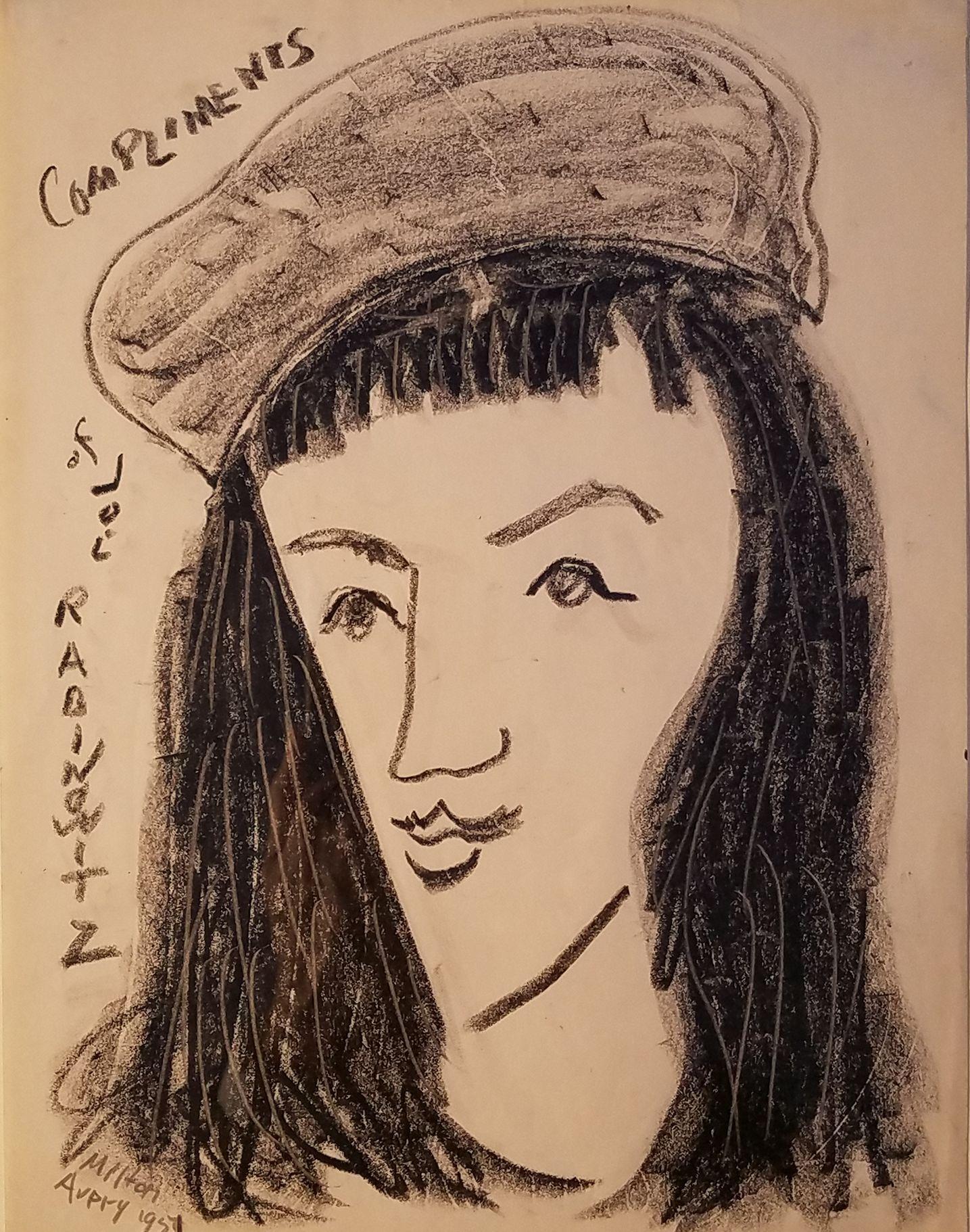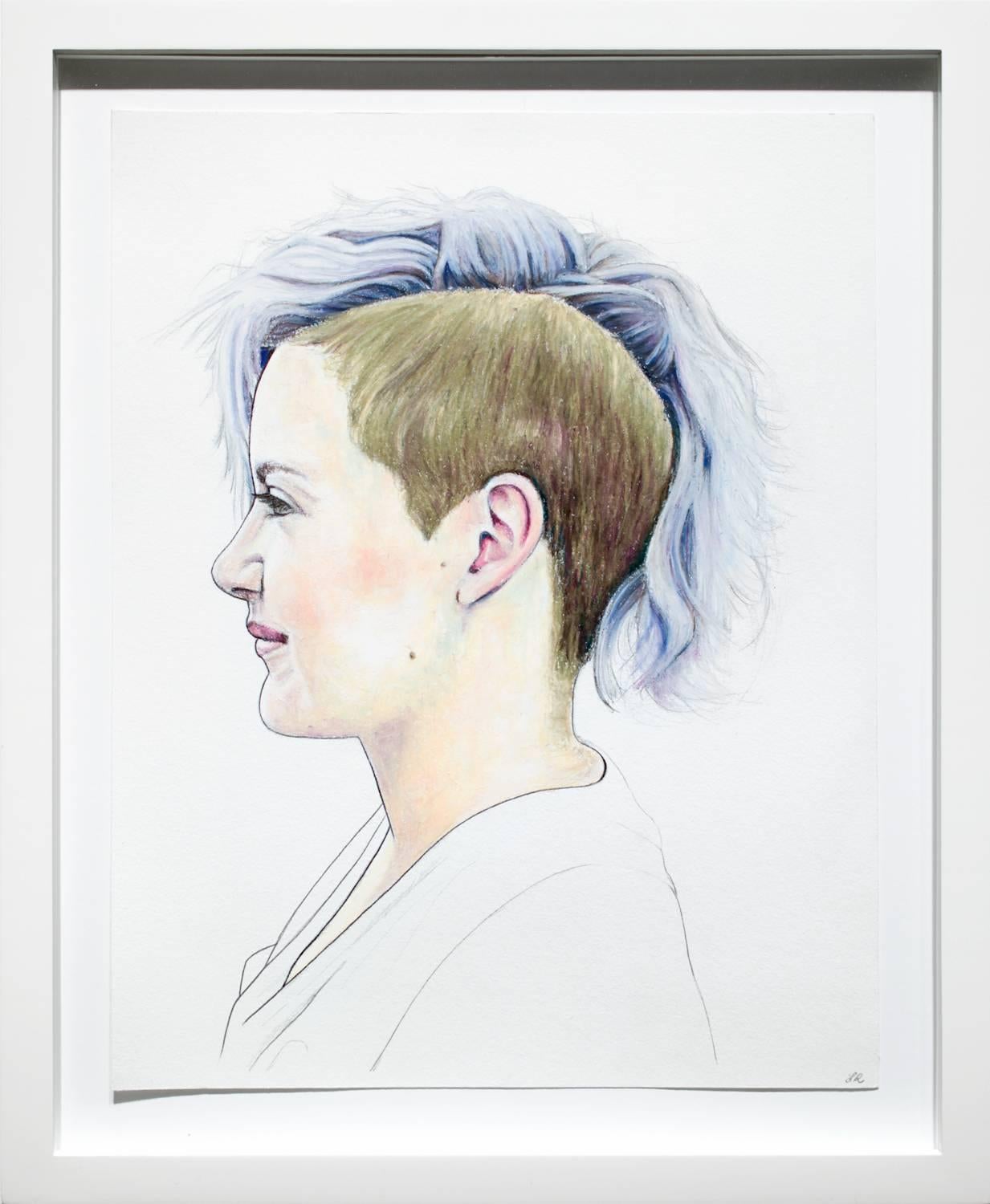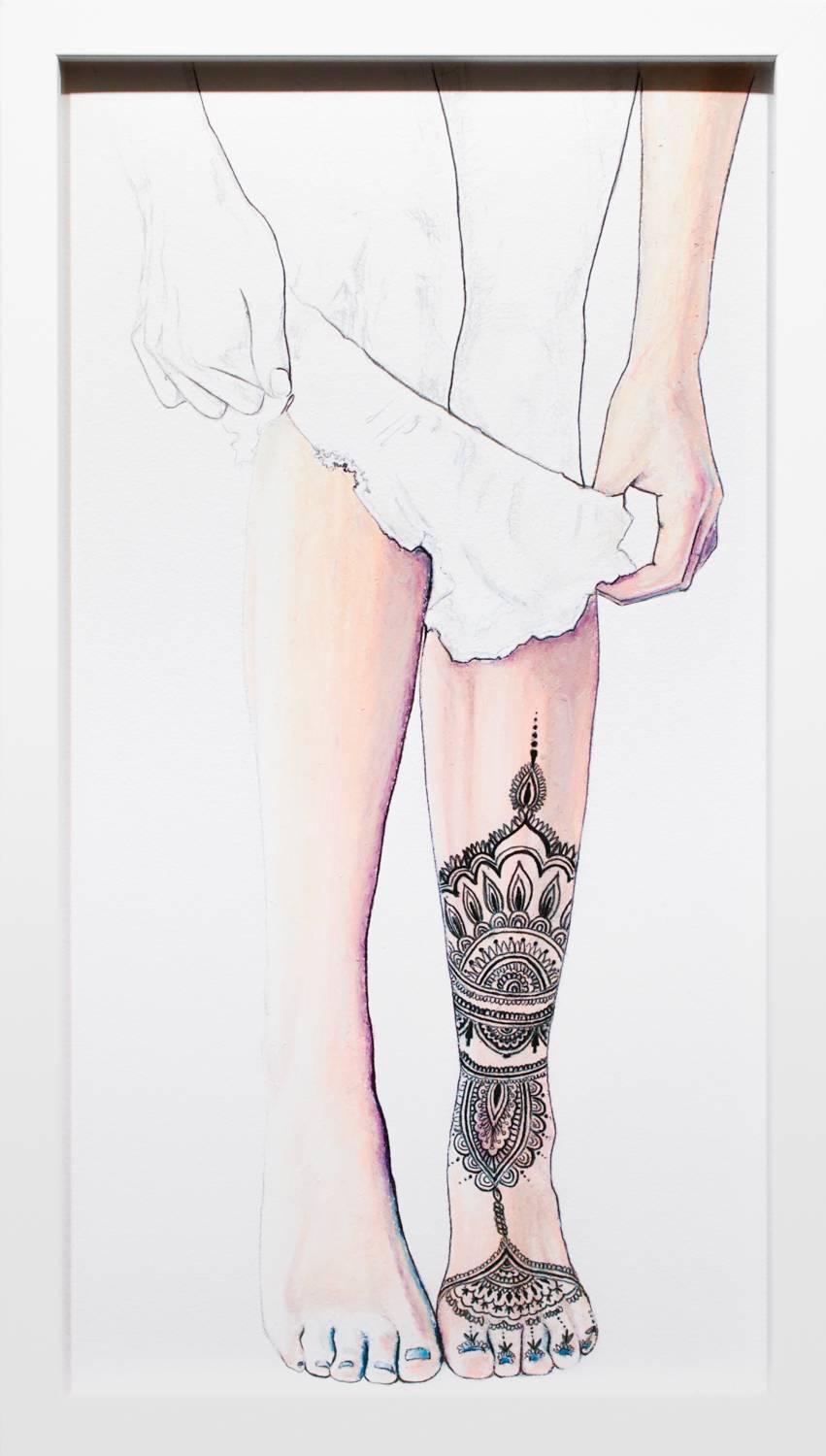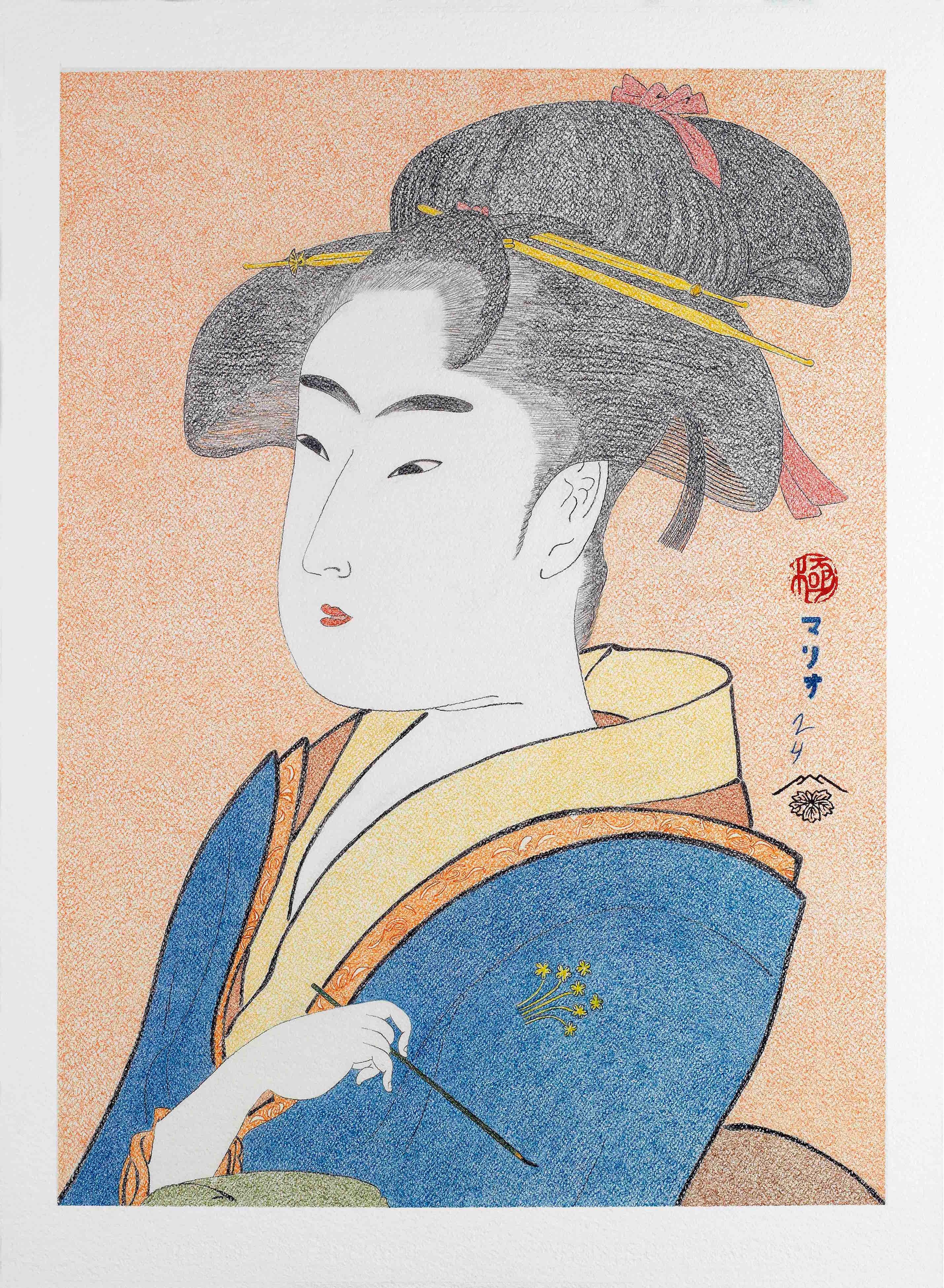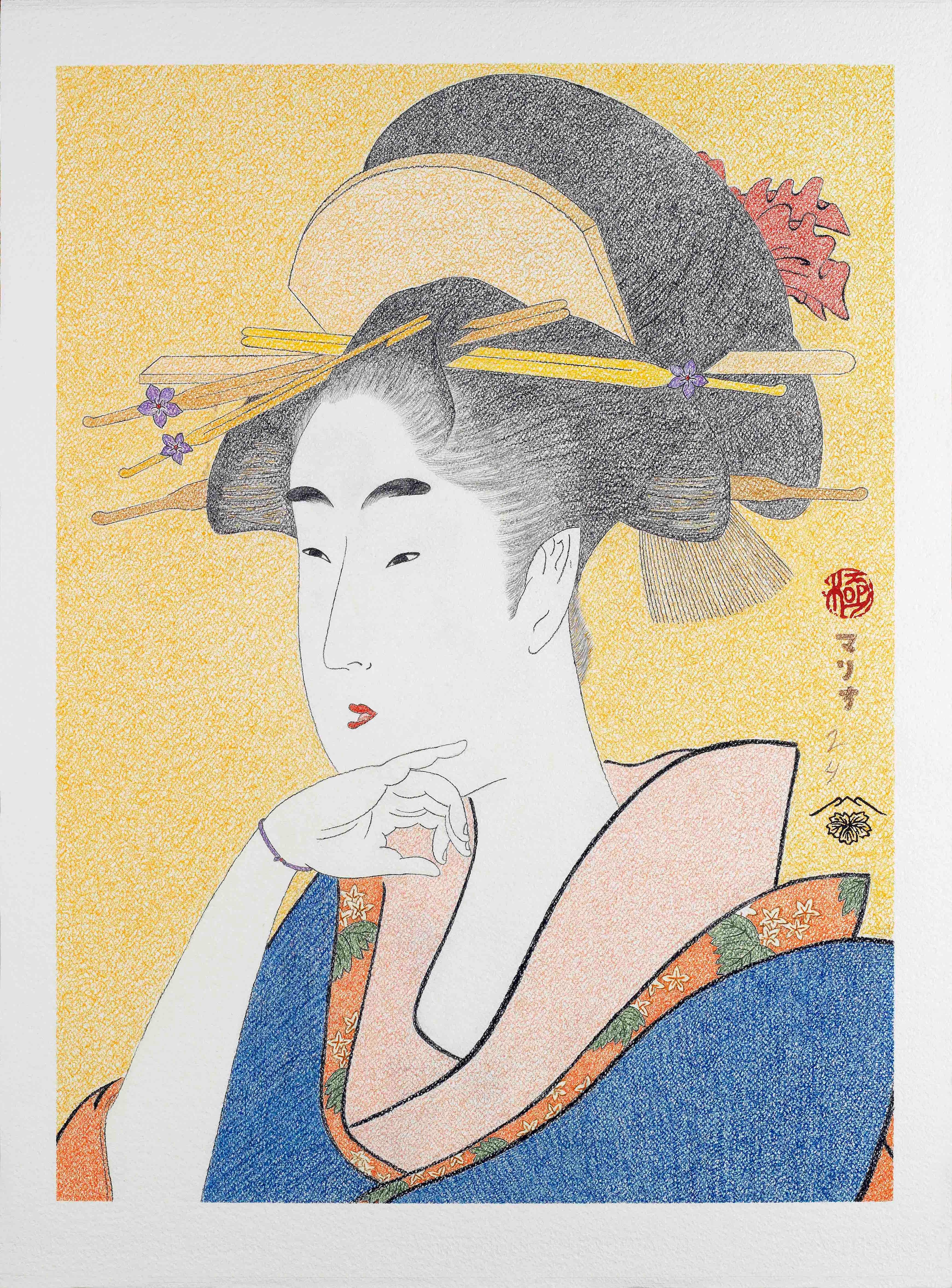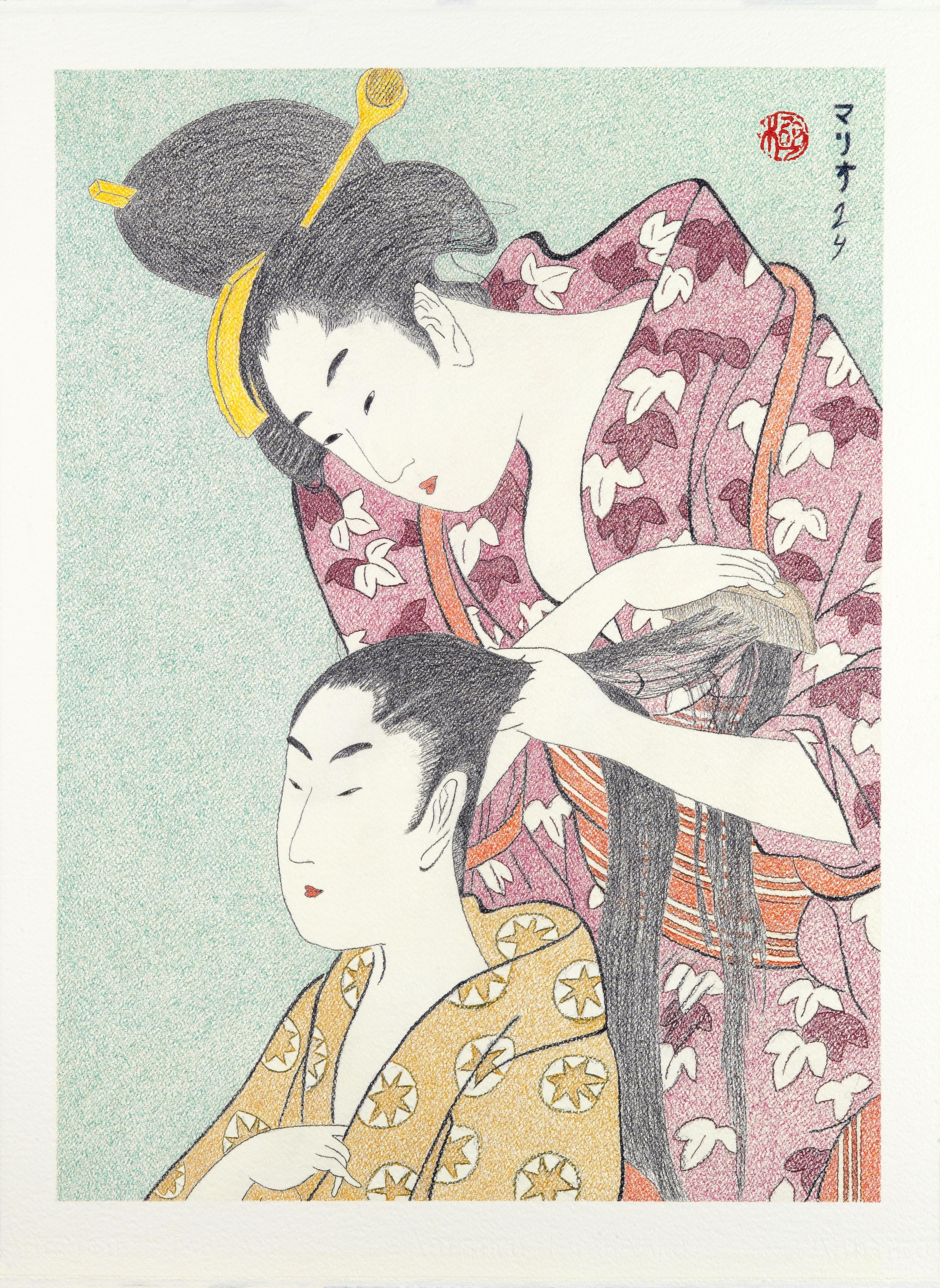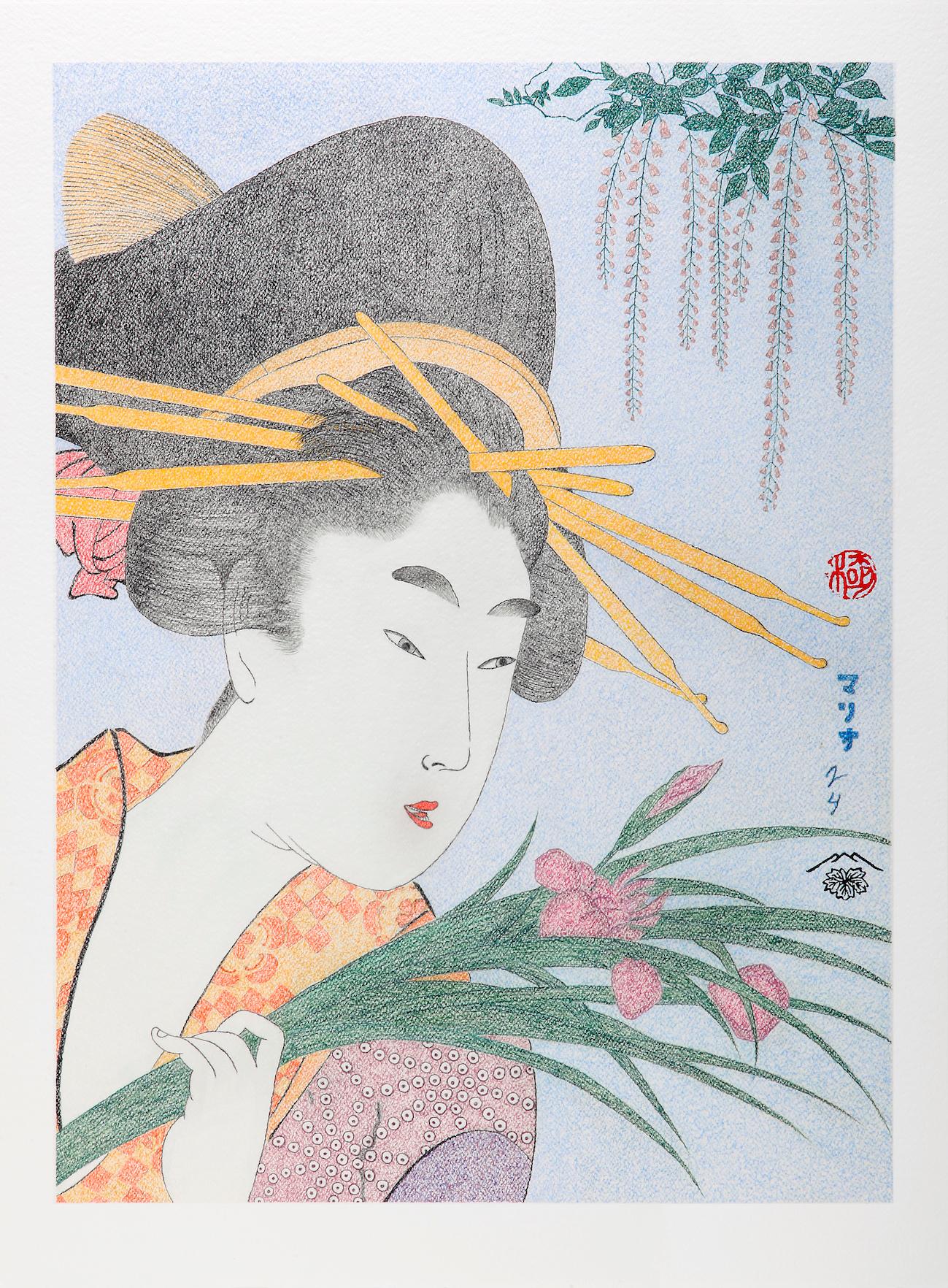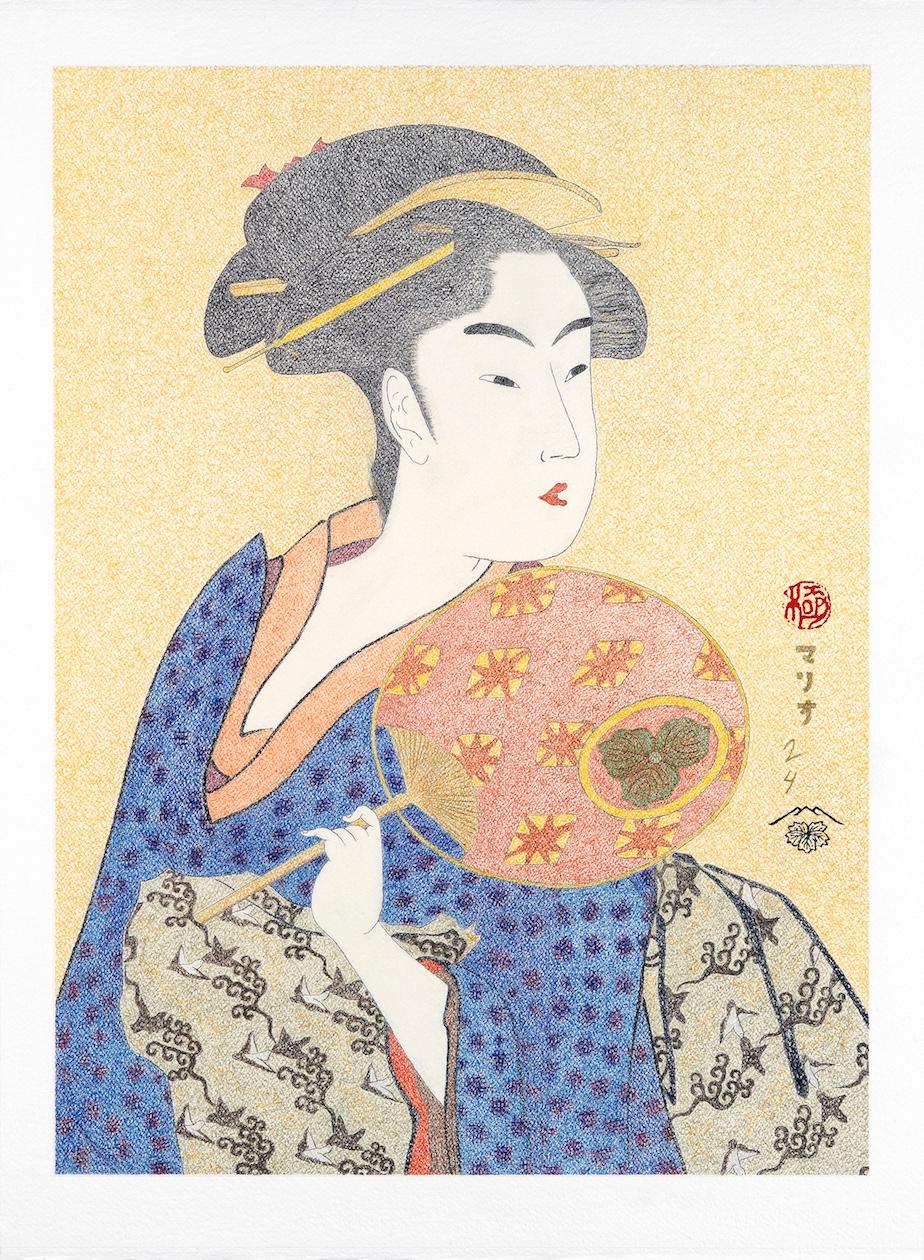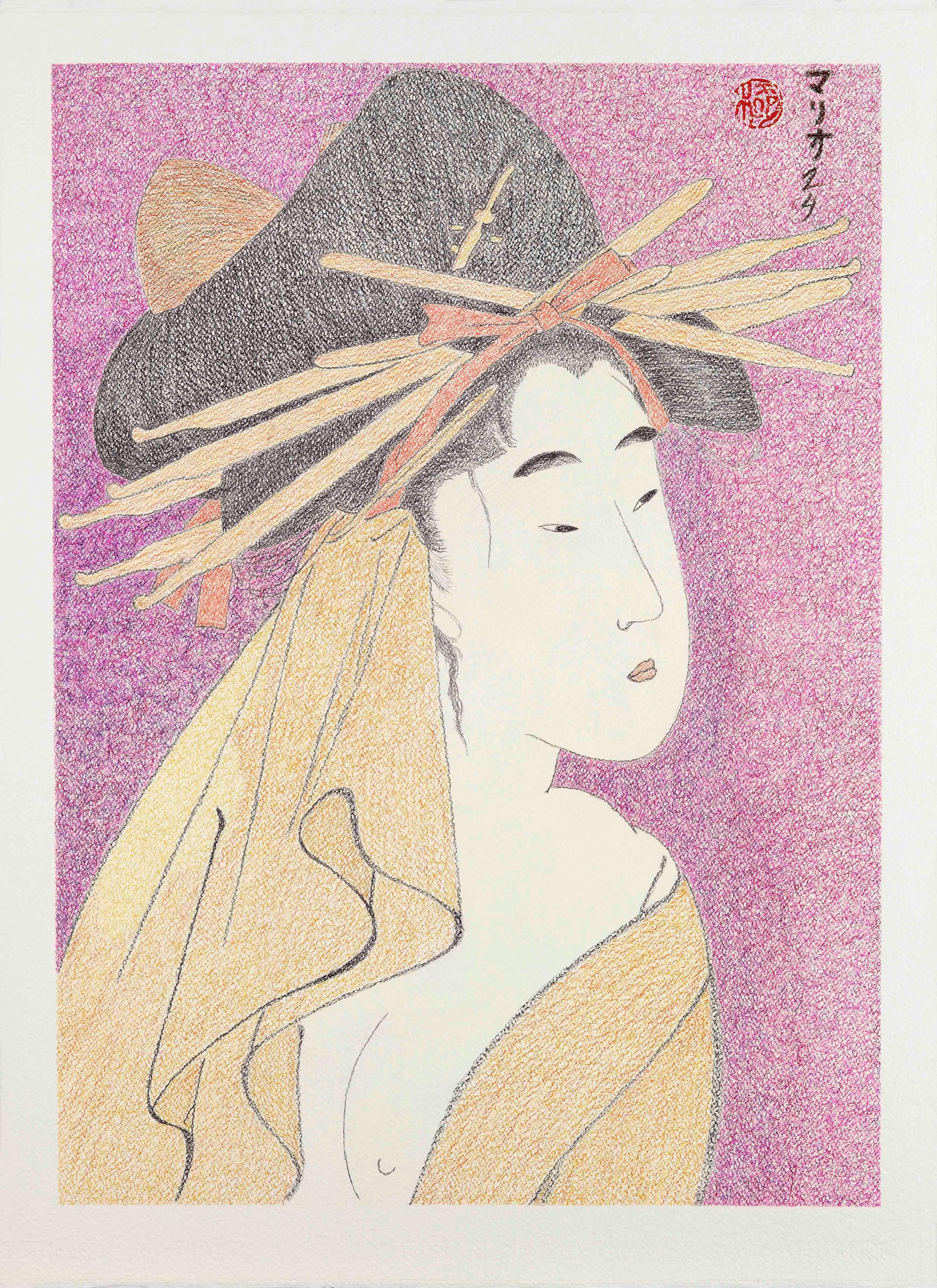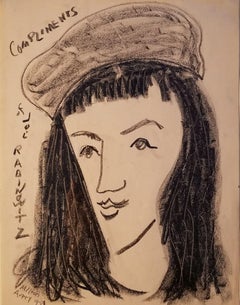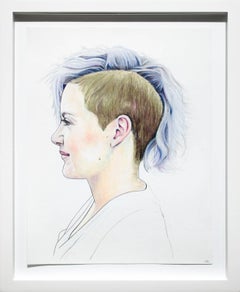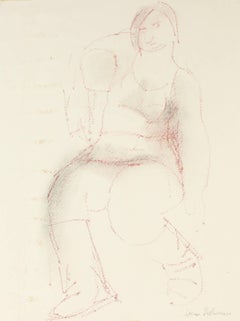
Minimal Expressionist Portrait in Graphite, Mid 20th Century
View Similar Items
1 of 1
Ethel Weiner GuttmanMinimal Expressionist Portrait in Graphite, Mid 20th Century
About the Item
- Creator:Ethel Weiner Guttman (1916 - 1990, American)
- Dimensions:Height: 13 in (33.02 cm)Width: 9.75 in (24.77 cm)Depth: 0.07 in (1.78 mm)
- Medium:
- Movement & Style:
- Period:
- Condition:
- Gallery Location:San Francisco, CA
- Reference Number:Seller: 874901stDibs: LU29821096243
You May Also Like
- Old Jewish Shtetl Rabbi Charcoal Judaica Drawing World War II EraBy Maurycy TrebaczLocated in Surfside, FLMaurycy Trębacz (1861 – 1941) was one of the most popular Jewish painters in Poland in the late 19th and early 20th century. Many of his paintings were lost in the Holocaust, but a r...Category
1930s Expressionist Figurative Drawings and Watercolors
MaterialsPaper, Charcoal, Graphite
- "March Avery in Beret, " Milton Avery, American Modernism, Portrait of ArtistBy Milton AveryLocated in New York, NYMilton Clark Avery (1885 - 1965) March Avery in a Beret, 1951 Black crayon and graphite on cream wove paper 11 x 8 3/8 inches Signed and dated lower left; ...Category
1950s American Modern Portrait Drawings and Watercolors
MaterialsGraphite, Crayon, Paper, Pencil
- "Truer Than True" ballpoint pen, figurative portraitBy Lauren RinaldiLocated in Philadelphia, PAOriginal drawing by Lauren Rinaldi float mounted in the pictured simple white frame measuring 17in x 14in. Lauren Rinaldi works using unbiased portraits of women’s bodies as a veh...Category
21st Century and Contemporary Contemporary Portrait Drawings and Waterco...
MaterialsBallpoint Pen, Archival Paper, Graphite, Oil Pastel
- "Veneer" Figurative Drawing, Color Pencil, Ballpoint Pen, GraphiteBy Lauren RinaldiLocated in Philadelphia, PA"Veneer" is an original oil pastel, ballpoint pen, color pencil, and graphite on arches paper work by Lauren Rinaldi. This piece ships in the pictured archival custom frame. The pape...Category
21st Century and Contemporary Contemporary Figurative Drawings and Water...
MaterialsArchival Paper, Oil Pastel, Ballpoint Pen, Color Pencil, Graphite
- Japanese Art Ikiyo-e Figurative Painting, Obvious Love Arawaruru Koi, Edo periodLocated in Segovia, ESBIJIN-GA SERIES XVIII (Nº 18) Title: Obvious Love (Arawaruru Koi) This image is part of the bijin-ga series (“Pretty women”) drawn by Mario BGil, based in the Kitigawa Utamaro woodblock print Obvious Love (Arawaruru Koi) (1793-94); 38,8 x 26,2 cm.. Art Institute Chicago, USA. A sensual woman seems to care little that her kimono is open, exposing a breast. Her hair is in disarray , the hairpin at the front about to fall and she holds one of the hairpins in her left hand. She appears to be looking down outside the frame of the picture, perhaps in mid-conversation. The term “arawaruru” refers to a love so wholehearted that it expresses itself in the lover´s face and mannerisms. In the 1780's and 90's the publisher Tsutaya Juzaburo and the designer Kitagawa Utamaro worked together on the production of many woodblock prints, most of them of the bijin-ga type. One of their most popular productions was a set of images that purported to depict psychological classifications of women - 'fickle', 'interesting', etc.. Perhaps in response to this success, they then came up with something similar - a set of prints...Category
2010s Edo Figurative Drawings and Watercolors
MaterialsPaper, Graphite, Crayon, Oil Crayon
- Japanese Art Ukiyo-e Figurative Painting, Tomimoto Toyohina, Edo periodLocated in Segovia, ESBijing-Ga series XXVII (Nº 27) Title: Tomomoto Toyohina Tomimoto Toyohina was a much sought-after geisha (entertainer) who performed narrative ballads accompanied by the shamisen. She was one of several non-prostitute beauties, including teahouse waitresses, whom Utamaro depicted repeatedly in the early to mid 1790s. She appears here with a brush in hand, dressed and combed with simple elegance. This composition is from a six-print series comprising half-length portraits of famous beauties (Famous beauties of Edo). Utamaro elevated Tomimoto Toyohina to the status of one of the three most renowned beauties of her age (together with Okita and Ohisa). She was from a prominent family of musicians that provided entertainment in the Yoshiwara. Toyohina’s appeal undoubtedly was as much due to her appearance as to her skills in singing, and Utamaro’s celebration of her would have further elevated the status of an already well-known lineage. This image is part of the bijin-ga series (“Pretty women”) drawn by Mario BGil, based in the Kitigawa Utamaro woodblock print...Category
2010s Edo Figurative Drawings and Watercolors
MaterialsCrayon, Paper, Oil Crayon, Graphite
Recently Viewed
View AllMore Ways To Browse
Art In San Francisco
Vintage Minimalism
Mid Century Minimal
Bay Area Artists
Mid Century Expressionist Art
Minimal Drawing
Minimal Portrait
Minimalism Portrait
Bay Area Expressionist
Bay Area Mid Century
Conte Crayon
Conte Crayon Paper
Ethel Vintage
Ethel Weiner Guttman On Sale
Peter Coker
Rob Wilson
Me Dolly
William Hoare

